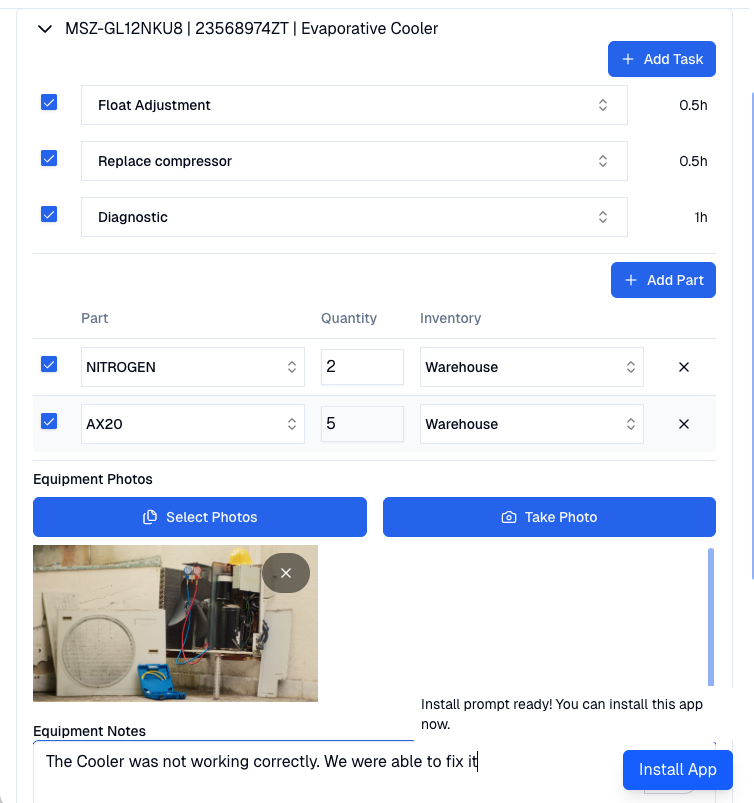An HVAC service provider in the United States was managing their business across multiple disconnected systems — accounting software, spreadsheets, and phone calls for scheduling. This scattered approach made planning and executing work time-consuming and prone to error.
Here's how we built a custom Field Service Management platform that brought all their operations together.
OUR ROLES
CONSULTING
We navigated the process and managed the project.
DEVELOPMENT
We took care of the fullstack development using various tools.
INTEGRATIONS
We made it possible to seamlessly connect and integrate with other applications
MONITORING
We monitored the app and visualized data to track the necessary metrics.
BACKGROUND
The HVAC service industry is seasonal and demanding. During peak months, customer demand for repairs surges, and responding quickly is critical. As the company grew, managing more technicians and jobs became increasingly complex.
Communication between office staff, customers and technicians happened mainly through phone calls. Tracking what work was completed, what parts were used, and what to charge customers required piecing together information from multiple sources - spreadsheets, accounting software, and email threads. This operational overhead was unsustainable, especially during busy seasons.
CHALLENGE
The company realised they couldn't grow without a unified tool. They needed a platform that would consolidate everything in one place, save time on manual work, and give them visibility into job history and changes. They also wanted customers to have access to information about their equipment. When they researched existing solutions, nothing came close to meeting their specific needs and long-term vision.
SOLUTION
We started with a two-day workshop with key stakeholders and department representatives from the company. This gave us a deep understanding of how they worked, what their pain points were, and what they needed from the platform. Together, we created a plan, roadmap, and defined the initial scope of the project. This upfront collaboration meant we could start development with a clear vision and verified requirements, making the entire process smoother.
We built a Field Service Management platform with three connected applications — a backoffice app for the office team, a technician app for field work, and a customer portal. All three sync in real-time and integrate with their existing tools: QuickBooks for accounting, DocuSign for contracts, and Stripe for payments.
THE Backoffice APP
The backoffice app manages the entire operation. Office staff handle customer and equipment data, create and sign maintenance contracts through DocuSign, and schedule work automatically based on those contracts. The system generates quotes when repairs are needed, based on what technicians report from the field and can send them to customers for approval. Office staff manage parts inventory, track time spent on jobs, and monitor profitability by job. Purchase orders and invoices are managed through QuickBooks integration, and invoices are sent to customers with payment processed through Stripe.
Technician APP
Technicians work on tablets and mobile devices in the field. They see their assigned jobs, clock in, and complete the work. They can add tasks and parts as needed, upload photos and notes about the equipment, and submit quotes if necessary.
Before heading out for a new assignment, they can see any purchase orders for that job and mark parts as picked up. The app shows equipment history, so technicians can see what issues came up before and diagnose problems faster. Most of their work happens in the app — they rarely need to contact the office.
CUSTOMER PORTAL
Customers have their own portal where they can access all the information they need without calling the office.
They see their equipment history and can review contracts, approve quotes, and track upcoming and past jobs. They have a clear view of their spending across different time periods, so they know exactly what they're paying for. They can pay invoices directly through Stripe, making the whole process self-service and transparent.
Find out how we can put solutions like these to work for you.








